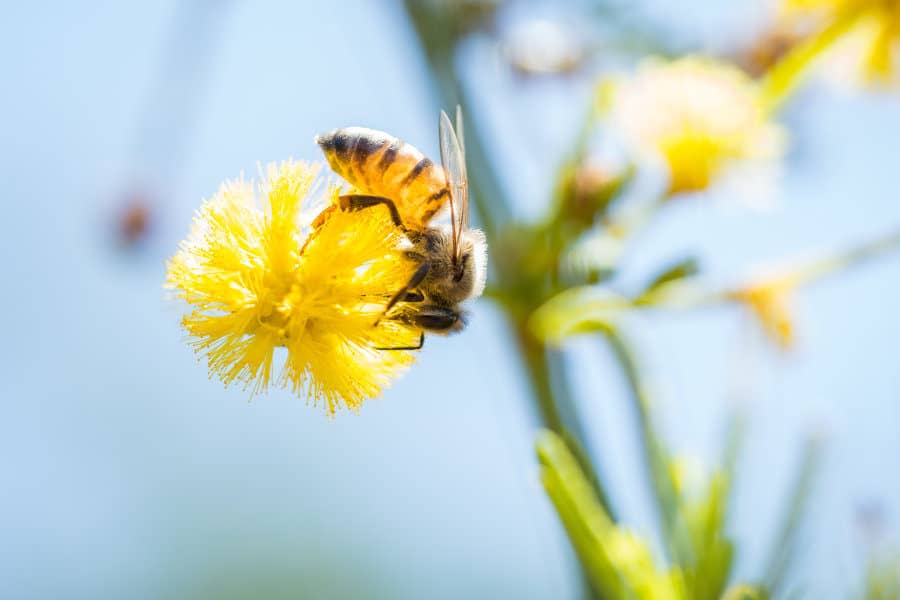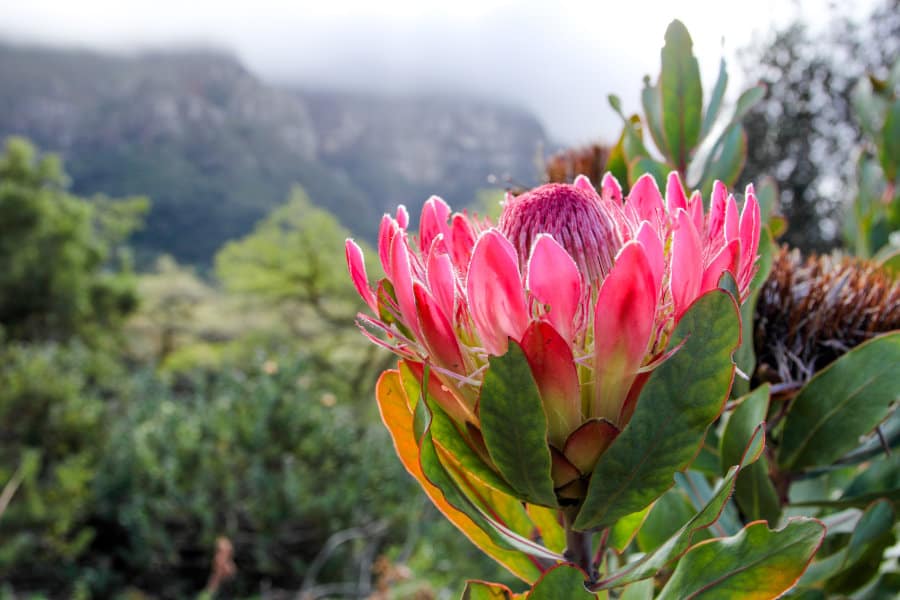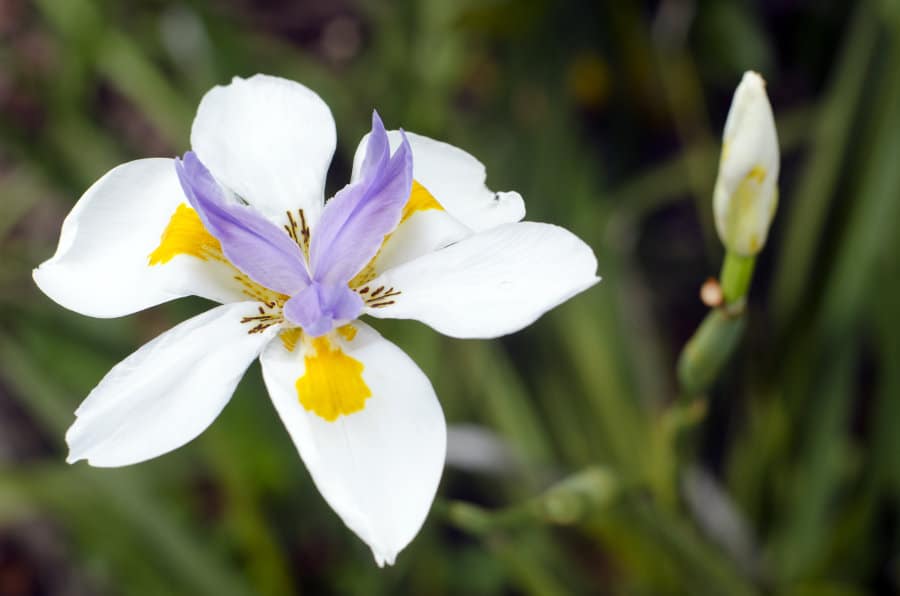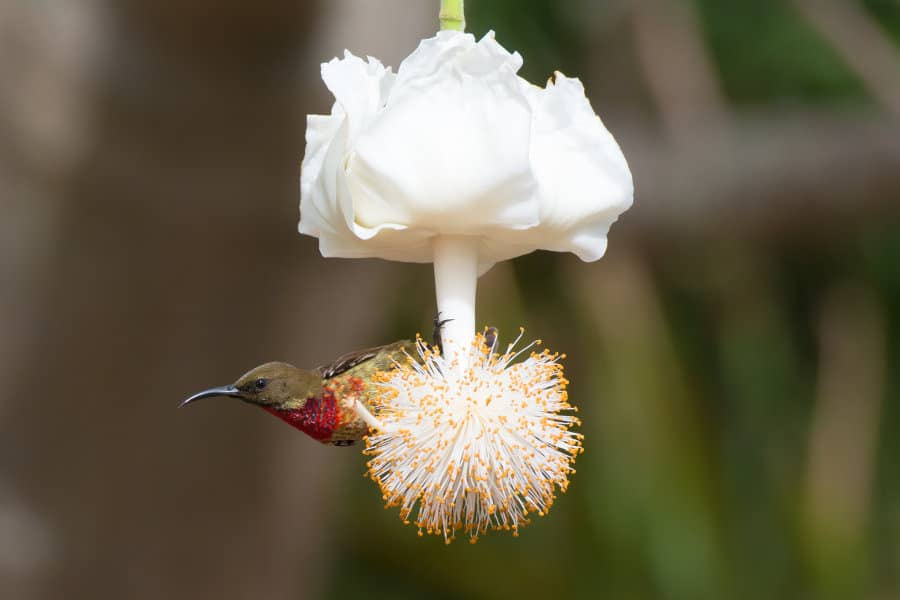Acacia flowers are one of Africa’s greatest treats, sensual and eye-opening as they bathe the savannah in colour.
The acacia tree is a giant figure on the African landscape. For thousands of years, desert nomads have relied on the acacia for territorial organisation, spiritual practice and tribal law.
But the acacia flower doesn’t stay in Africa. The tree and flower has spread far and wide, as you are about to discover.
In love with the acacia flower
The pale yellow and gold acacia flower has captured the hearts of lovers. For the Victorians, the flower represented a secret love. Giving this flower to another also represented a deep friendship.
Then there is a lore that says that burning of acacia bark drives out demons and evil spirits.
Medicine of the Acacia Flower

The Egyptians used the acacia flower to cure rabies by boiling up the flower with tatcha roots. References to this potion was found documented in Ethiopian medical texts.
In Ayurvedic medicine, acacia leaf, flowers and pods have long been used to treat worms, staunch bleeding, heal wounds and help suppress the coughing up of blood.
Sweet Smells of the Acacia
The root, bark and resin is known to be used as incense during rituals in countries like China, India and Nepal.
The acacia is also rumoured to have played a role in the Bible, referenced when Moses received a message from God to build a tabernacle. It’s thought that the table used for the tabernacle was made from wood of the acacia.
The people from Lake Chad are known to use the stems of the acacia as fishing spears and in Senegal, the roots are used as spear shafts.
The Botanist Bun Fight

Now, you wouldn’t normally imagine botanists in a bun fight, but that’s a very good description of what took place in 2011.
In 2011, at the 17th International Botanical Congress in Melbourne, a very important decision was taken. The debate was very controversial and was won by Australia.
Ultimately it means that the genus acacia is now exclusively reserved for tree species native to Australia. So, officially, there are no more acacia flowers in Africa! How bizarre!
Newspapers like the Nairobi’s Sunday Nation ran with the headline “Did you know it is illegal to call this tree acacia? Australia claims exclusive rights to the name.”
So what happened?
The Renaming of African Acacias

In the South African context, understanding the difference between the Australian acacia or wattle flower, and African acacia flower, is proving important from a conservation perspective.
Acacia mearnsii, more commonly known as the Australian black wattle, invades grasslands and directly competes with indigenous species and reduces grazing areas.
Australian acacias are an invasive species. Knowing how to spot the difference between the wattle flower and acacia flower is important. Conservationists can act fast and remove them from the area quickly.
Most importantly, anyone visiting Africa can still see acacia flowers in bloom.
African Acacia Flowers
Yes, we still call them acacia. Even though botanists have accepted and adopted changes from the botanist congress in 2011, it will always be the acacia flower in Africa.
You can even argue that it’s impossible to remove the word acacia from our vocabulary, given that reference to this tree and its beautiful flower goes all the way back to the Old Testament.
Here are three acacia flowers that are as authentically African as African wildlife.
Sweet thorn acacia flowers

Known more commonly as the sweet thorn, these flowers are widely found in the Western Cape of South Africa, Zambia and Angola.
The flowers of this acacia produce lots of nectar and pollen, making them ideal for bee-farming. They are golden yellow in colour and look like little cheerleader pom-poms from a distance.

You’re most likely to spot these acacia flowers on a Southern Africa safari after a decent spell of rain.
Quick facts:
- These acacias flower in early summer
- Maximum height in optimum conditions is 12 m
- The name, sweet thorn, was derived from the sweet tasting gum some animals feed on
- The gum was once an export known as Cape Gum and used for confectionery
- The lifespan of this acacia tree is 30-40 years
Knobthorn flower

Senegalia nigrescens or knobthorn acacia flowers bloom during August and November. This acacia flower is yellow with tints of white and makes for a colour explosion on the savannah.
Upon close inspection these beautiful flowers look a lot like long cotton buds.

Quick facts:
- The flower bud is a dark red, almost brown colour
- Giraffes, baboons and monkeys love to eat the flowers
- The knobthorn flower smells amazing (really – you need to search for these flowers!)
- The flowers form a drop like shape, hanging from the tree
- These acacia flowers appear along with the new leaves of the knobthorn
Umbrella thorn acacia flowers
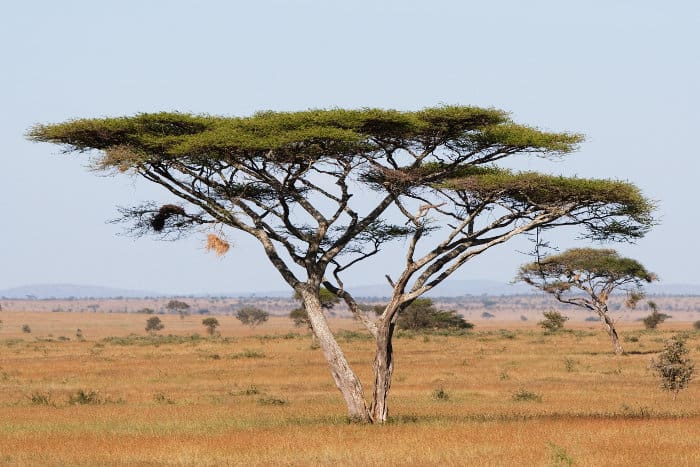
Perhaps the most recognisable of all the acacias is the umbrella thorn, or acacia tortilis flower. This extraordinary tree thrives in the most hostile of conditions, where temperatures reach 50 degrees Celsius and there is very little rain.
The distinct flower this acacia produces looks like lollipops from a distance. When you look closer you can see they are individual white stems with bright yellow tips.

Quick facts:
- Gum from the tree is edible
- The umbrella thorn tree can be used to rehabilitate land
- Timber from this tree was used by the Israelites and referenced in the Old Testament
- This acacia flowering is sporadic and dependent on rainfall
- These trees grow up to 20 m tall
Where to Find Acacia Flowers

Acacias are drought-tolerant trees which means you’ll find them in the dryer or more arid parts of Africa. They survive the harsh conditions in part because of a long tap root system, allowing them to reach deep water sources underground.
The African savanna is one of the perfect places to find them. From the Kruger National Park to the Kalahari desert, the acacia flower is easy to spot.
The added bonus to finding these majestic trees is that wildlife won’t be far away.
Senegalia nigrescens, for example, produce a fruit or a pod eaten by giraffe and other animals. And that’s just the start. Elephants are known to eat the branches, leaves and shoots, kudus will eat shoots and leaves, while monkeys and baboons are known to eat the flowers.
The flowers of acacia nigrescens are in bloom from August to November.
Nature’s Decoration
In a landscape as stark and beautiful as the African savannah, the sight of an acacia in full bloom is nothing short of spectacular. The acacia flower is a colour explosion on the land, delivering news of prosperity and abundance that the rains have fallen.
It’s easy to fall in love with acacia trees and their delicate gifts – the acacia flowers that brighten the African plains.
